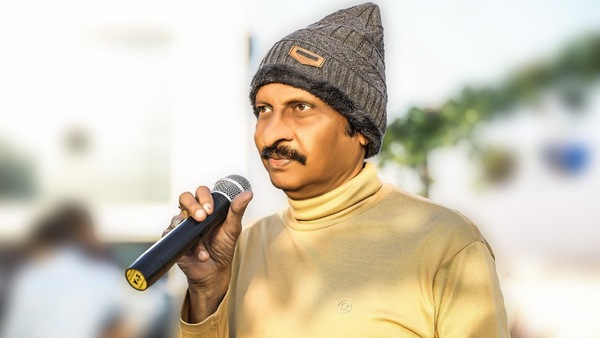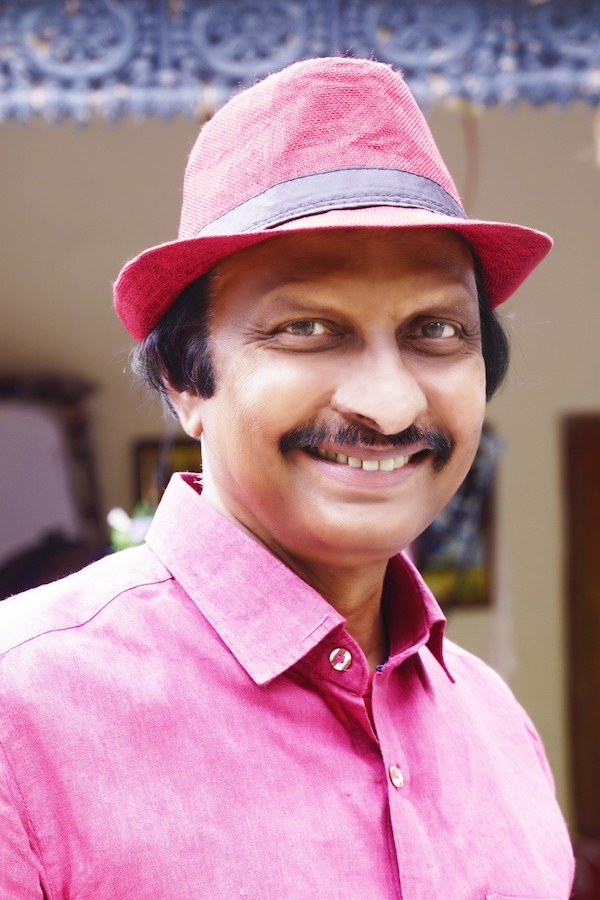Director Siva Nageswara Rao: Dochevaarevarura was an idea born out of a story I didn’t like | Exclusive
The filmmaker, behind Sisindri, Money and Pattukondi Chooddam, talks of returning to Telugu cinema after a seven-year-long sabbatical

Last Updated: 05.52 PM, Mar 11, 2023
There’s a lot that Uppalapadu-born director Siva Nageswara Rao has gone through in an extensive career in films, but not much of it has deterred his zest for work. He doesn’t take life too seriously and tries to find a ray of hope even in unconventional situations - it’s not surprising why he’s considered a black comedy specialist.
He returns to direction after a seven-year-long sabbatical with Dochevaarevarura, a crime comedy starring Pranava Chandra, Malavika Satheesan, Ajay Ghosh and Bithiri Sathi. As the film hits theatres today, he catches up with OTTplay.com.
Four decades into cinema and still raring to go!
I am surprisingly not vexed with the ways of the industry; I’m still enthusiastic and eager to prove myself and reinvent from time to time. When I see a few of my counterparts, I feel sorry for them and with another lot, I feel rejuvenated. I try to upgrade with the times and try to look at the lighter side of the picture, even as I promote my film now. This is how I’m wired - there’s entertainment, satire and good fun in my life and I want to stay the same till my last breath.
A brief tryst with acting in 1979 - Burripalem Bullodu, Sannayi Appanna
Right from the beginning, I wasn’t fond of acting or facing the camera. My only focus was about the money I would earn for the shoot, mixed with the crowds and stayed as far from camera as possible. I worked on three such films and they used to pay me Rs 100 for three days. There was exploitation as well, because I didn’t have a union card and registered members got paid more.
As per records, the supplier took the money for a union member from the production team and paid me only Rs 100. The world hasn’t changed even now and exploitation continues in various forms. There are only two things here - avasaram (need) and avakasam (opportunity). Those who’re in need are left with no choice and those, with an opportunity, tries to exploit.
The motivation to come to Madras for a career in films
Since childhood, I was fascinated by dramas and was keen about art forms - from harikathas to tolubommalata. Even in them, I enjoyed the comedy segment and there used to be riddles too. All these eventually paved the way for my interest in cinema. However, Dasari Narayana Rao was a huge influence on me - films like Idekkadi Nyayam, Thatha Manavadu, Swargam Narakam made an impact.
In a hero-centric era with plots revolving around stars, Dasari’s films were unique and they piqued my interest. My sole ambition behind coming to Madras was to assist Dasari. When I approached one of his assistants, he asked me to write something on paper and checked my handwriting. After looking at the paper, he said I wasn’t fit to assist Dasari.
“Talaraatha bagundali kaani, raatha bagundaka povadam enti?,” I thought to myself. The next day, I worked on my handwriting while rewriting newspaper articles. When I showed that to him, ‘that’ assistant of Dasari praised my determination but told me there were no vacancies in his team. I may not have learnt to write well had he informed that to me earlier. It’s important to learn from every experience.

Stint as an assistant director, learning some important lessons
Let me tell you the story by comparing it with another field. In politics, there are two ways to become a minister - you can rise through the ranks, from a regular party worker to working on a community level to a corporator to an MLA or can directly become a minister after winning an MLC seat. The one taking the earlier route will have a practical understanding of a common man’s problems and do a good job with the administration. Having knowledge is always a bonus.
Under the likes of CS Rao, Vijaya Nirmala and Madhusudana Rao, I learnt the ropes of storytelling, minimising costs and telling a story under a stipulated budget. The camera angles, shot divisions were planned in advance and the actors were quite dedicated, fully aware of the story and reacting to those shots. Scenes which conventionally took over 6 hours were wrapped in 2 hours straight.
Developing my own style with time
Entertainment was my forte right from the beginning. From Antham Kadidi Arambham to Bhogi Mantalu to Jagannadha Ratha Chakralu, I did the best I could, in my capacity as an assistant. However, as a viewer, I enjoyed comedy films more - the ones made by Jandhyala, Nagesh’s, that had a good mix of humour and drama. Later, I extensively watched Italian great Robert Benigni’s works. Influences of his Life is Beautiful can be felt in Dochevaarevarura too. Comedy with a tinge of sentiment appealed to me.
The entertainment quotient you see in my films are a product of my own thoughts. My strength as a director is that I can predict how a viewer would react to a situation. They may laugh a second or two later but ‘navvadam mathram pakka’ (they will laugh, for sure). I can judge the comic potential of a scene and audience reaction and that’s how I write my scenes.
Can his small-budget successes perform well in theatres in today’s scenario?
It would’ve been highly impossible for my own films like Money and Pattukondi Chooddam to have an extensive run at the box office if they were released today. There are too many variables involved. There were four films and 10 theatres in those days. Today, when a big film is out, it releases in 99 out of 100 theatres in the city. The main focus is to draw revenues as early as possible in all areas.
When everyone has already watched the film in a few days, why will it have a long run? Even when I’m releasing Dochevaarevarura today, I’m aware of how long it will last in theatres. It would be foolish of me to expect it to run for over 50 or 100 days.
The Dochevaarevarura story
The story was born out of another plot idea that I didn’t like. When I put that idea aside, I was excited by another story. I finalised Ajay Ghosh during the scripting stages. I had watched him at work, his eyes and diction in a few shoots. Bithiri Sathi plays another interesting role - he’s nicknamed a freelancer with a silencer. Tanikella Bharani, Kota Srinivasa Rao and Benarjee will be seen in crucial guest appearances that’ll give a direction to the story.
Turning a lyricist for the film
People are making pan-Indian films today; I wanted to try my hand at a pan-global trend (laughs) for a song. I was Googling a list of languages that were going extinct. I came across a language named Kaixana - there’s only one person in the world who’s speaking it. I interacted with him and made note of a few words from the language. I made changes to it and tried to create my own jargon and pen a song in gibberish. I won’t be calling myself a lyricist but I enjoyed the process. Mano and a newcomer Sunaina did a good job with the song.
Roping in three newcomers
There are three debutants in the film - the cinematographer, actor Pranava Chandra and singer Sunaina. Though I finalised other actors for Pranava’s role earlier, I wasn’t quite happy with their attitude. Comfort-level is key to filmmaking and I came to know of Pranava, who was assisting Chandra Siddhartha then. When he did the audition, I had no second thoughts.
How does a director, as experienced as you, pitch a story to a producer?
I generally don’t pitch my stories to producers. In this case, it was the producer Boddu Koteswara Rao, based out of New York, who chose me after noticing my Youtube videos and liked my approach. I run a channel named ‘Once more’ and it has decent popularity and earned me this opportunity. We interacted over phone for some time and then finalised the story.
By the time he came to India, I wasn’t quite satisfied with the plot and said we should drop it. He was slightly disappointed but I asked him 10 more days for a new script. He liked that a lot and the project went on floors. What to expect from Dochevaarevarura? Well, there’s a reason why KGF went viral the past few days. If you liked KGF, get ready to watch TGF. You need to watch it in theatres to know what I’m talking about.
On a not-so-memorable association with the small screen
There’s very little creativity involved in a role as a creative head in a channel. The channels/production house take the serial forward as per their will and the process is quite mechanical. I don’t think I fit that profile that well - maybe it’s not my cup of tea.

 Premium
Premium